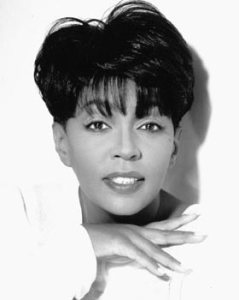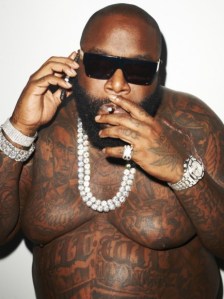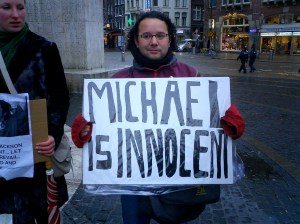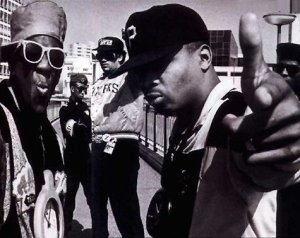Tags
BWP (Bytches With Problems), Cardi B, Donna Summer, Explicit Lyrics, Hip-Hop Culture, Megan Thee Stallion, No Face, Pitt, Rap, Raunchy Music, Self-Awareness, Social Media, Too Short, Willful Ignorance

A few months ago, I watched part of my Twitter feed blow up over the raunchiest songs of all time. It was between Cardi B and Megan Thee Stallion’s “WAP” and some newfangled hit in the middle of the first Omicron surge. I shook my head and decided not to reply. Any thread on raunchy music that excludes Donna Summer’s “Love To Love You Baby” is pretty inexcusable.
This theme pops up every few months on Twitter and other social media circles, unfortunately. I saw one tweet near the end of July talking about how there weren’t any nasty lyrics prior to 2010! As an eclectic music consumer and as a trained historian, I find all hot trash declarations arrogant and offensive. I mean, how much research did these people do before they decided that their tiny window into lyrics, videos, and sounds led them to these ludicrous conclusions? None, apparently. It would be like trying to fight COVID-19 or monkeypox with Raid roach spray and Grape Kool-Aid, I suppose.
Because I like to keep track of what’s out in the world, I dabble into the raunchy, almost always by accident, occasionally on purpose, because I am a curious person. And if anyone is willing to look and listen, the sexually obvious and guttural isn’t hard to find, and much of it is in the twentieth century. Robert Johnson, Elvis, The Beatles, John Lee Hooker, Bessie Smith, Prince, The Ohio Players, Donna Summer, and that’s off the top of my head. Pick a genre in any cultural medium, and there’s the equivalent of a closet full of stag films for anyone to discover.
With hip-hop, rap, and the music video age, the idea of what is and isn’t nasty or raunchy has been stretched like taffy, almost to the level of subatomics. 2 Live Crew’s 1989 album “As Nasty as They Wanna Be” would be relatively tame when compared to Too Short’s 1990s hit “Top Down” (“don’t swallow don’t spit”) or Nelly or Ludacris’ rap videos in the early ‘00s. And those dudes would be about on par with Megan Thee Stallion and Cardi B, but not quite as lyrically raunchy as LL Cool J’s 1996 hit “Doin’ It.”
As for my own deep dives into music with “explicit lyrics,” MC Lyte’s voice and Salt-n-Pepa’s first two albums probably made my toes curl up multiple times after first listening to their words and work. Even Salt-n-Pepa’s silly cover version of The Beatles’ “Twist And Shout” I found downright sexy. Honestly, it wasn’t just reading Audre Lorde or Toni Morrison that introduced me to the idea that Black women need to be free for all of us to be free. So it would be ridiculous to think my interests in music were purely intellectual. It was spiritual, it was sexual, it was emotional, it was imaginational, it was my need to take up roles and to take up spaces, and all at once.
Then again, I was between 18 and 25 years old, at my music-buying peak, constantly getting tapes and CDs and trying out artists because of one song or another. Everything from Arlo Guthrie to ZZ Top had been something to listen to at least once in the years between 1984 and 2003, especially when I was in undergrad at Pitt and going into grad school there.
Pitt’s radio station was and remains WPTS-FM 92.1, and for most of my 12 years living in Pittsburgh, it was only listenable on Friday and Saturday nights. (When I moved out of Oakland to East Liberty in 1990, just two-and-a-half-miles away from campus, sometimes I had trouble locating the station on my Aiwa tape decade and CD player — but I digress.) Saturday night was jazz and smooth jazz, and that occasionally was fine when I was in a Coltrane or Grover Washington, Jr. mood. But Friday nights were ones for rap, and mostly underground rap (or at least, underappreciated yet successful rap). KRS-One and Boogie Down Productions, PE, Chubb Rock, Queen Latifah, Tribe Called Quest, Pharcyde, Geto Boys, N.W.A., H.W.A., among so many others.
One night toward the end of 1991, I heard the rap group BWP (Bytches With Problems) for the first time. The brothas at WPTS played their big hit “Two Minute Brother” from their debut LP The Bytches. (I will forever find it funny that Lyndah McCaskill and Tanisha Michele Morgan put out a five-minute song about a guy who couldn’t last two minutes in bed.) My mind was blown. I had seen tons of explicit lyrics labels on tapes, vinyl records, and CDs before hearing BWP. “I guess this is what Tipper Gore was worried about,” I remember saying to myself after hearing the song again a few months later.
Out of New York, produced by No Face (think Mark Sexx and Shah collabs with Ed Lover and Shock G [RIP] for those who should know)/Def Jam Records, their sound wasn’t particularly unique. The duo’s willingness to be as real and nasty as they wanted to be, to go here, there, and everywhere as rappers was impressive. Their lyrics were the nastiest I’d ever seen and heard. I vaguely remember The Source doing a piece on them in 1992, and The Vibe a piece on their follow-up album from The Bytches somewhere in 1993 or 1994 (my friend Marc shared that article with me). Yeah, I liked them. I found them sexy as hell.
So much so that during my final summer coming back to Mount Vernon to work in 1992, I finally bought the album. I took my rare Friday evening at the beginning of August away from the duties of older brother and surrogate summer parent and took the 40 Bee-line bus up to The Galleria in White Plains. I saw nothing of interest at the Sam Goody’s there between Whitney, Boyz II Men (I was burned out from a summer of “End Of The Road” on air play every 20 seconds), and all the usual suspects in 1992. Then I stumbled on BWP. For anyone who loves raunchy lyrics, sex noises, and good beats, I promise you, there is no better collection of raps between 1971 and now. “ Is The P____ Still Good?” is the ultimate sex track. McCaskill and Morgan truly did it up. But, be warned. It can be addicting, especially for men who need to learn.
But the duo also dealt with Rodney King and police brutality on the LP, so it’s not just raps that some would say are better meant for hardcore porn. My second favorite song on the album was “No Means No,” or really “No Means No [m—f—]” There was some serious Black women’s empowerment going on with BWP’s work, but I guess most folk from the early 1990s either found them offensive or just weren’t ready to hear it.
Don’t believe folks — especially anyone under 35 — when they say stuff about “nasty lyrics” or “the raunchiest music videos” from 2010 or 2022. They really don’t know what they’re talking about. Seriously, willfully ignorant fans are the worst. They’re fickle, they’re momentary, and they turn anything any favorite artist of theirs does into the GOAT because they have no basis for comparison. Especially Beyoncé’s Baehive folks.

















